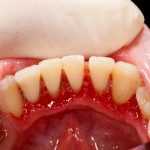
For patients with chronic periodontal disease periodontal maintenance treatment follows on from active periodontal treatment (APT). Maintenance is livelong and should be tailored to meet the patients’ needs. Periodontal maintenance may be carried out in specialist practice, hospital or in primary dental care.
The aim of this review was to assess whether the efficacy of periodontal maintenance treatment carried out in primary care compared to the specialist setting for patients previously managed for periodontitis in specialist centres.
Methods
Searches were conducted in the Medline, Embase, Web of Science and Cochrane Library databases supplemented by hand searches of the journals, Periodontology 2000, Journal of Clinical Periodontology, Journal of Periodontology and Journal of Periodontal Research.
Randomised controlled trials(RCTs), longitudinal prospective/retrospective cohort studies published in English were considered. Studies with a diagnosis of chronic (CP) or aggressive periodontitis (AgP) where treatment was provided in both primary dental care(PDC) and specialist care with at least 1-years follow up were considered. Study quality was assessed based using CASP tools and the Cochrane risk of bias tool.
Results
- 8 Cohort studies were included, 7 involved patients with CP 1 with AgP.
- Sample sizes ranged from 16-171 patients and follow-up periods from 1 to 27 years.
- Active periodontal therapy (APT) varied considerably across the studies
- 4 studies reported mean CAL and PPD (pocket probing depth) changes in patients with CP.
| Mean CAL change(mm) | Mean PPD change(mm) | |
| Specialist practice(range) | -0.1 to +0.1 | -1.8 to +0.8 |
| Primary Dental Care(range) | -2.8 to -0.13 | -0.7 to +2.9 |
- 2 studies reported more tooth loss in those having follow up in PDC.
Conclusions
The authors concluded: –
Within the limitations of the data available, it appears that specialist PM is effective in sustaining periodontal stability following active specialist intervention. There is limited evidence that primary dental care (PDC) provides the same level of care; however, the limited comparative data available suggest that outcomes could be slightly worse in PDC.
Comments
This review is limited to studies published in English so relevant studies may not have been included. As all the included studies are cohort use of the Newcastle Ottawa scale to assess the study quality would have been more appropriate. The authors do however provide some detail regarding various quality elements of the studies. It would appear few details regarding recruitment of the cohorts was provided, only one study used assessor blinding, there was considerable variation in the reporting of the periodontal maintenance interventions and only 3 of the studies took into account the role of confounders. Consequently, the quality of the evidence available to address the question is limited. Therefore in order to assess whether of periodontal maintenance treatment can be as effective in PDC as in specialist care high quality randomised controlled trials of appropriate size are required.
Links
Primary paper
Leavy PG, Robertson DP. Periodontal maintenance following active specialist treatment: Should patients stay put or return to primary dental care for continuing care? A comparison of outcomes based on the literature. Int J Dent Hyg. 2017 May 22. doi: 10.1111/idh.12288. [Epub ahead of print] Review. PubMed PMID: 28544259.
Other references
Dental Elf – 6th Feb 2017
Periodontal treatment: outcomes from long-term conservative management
